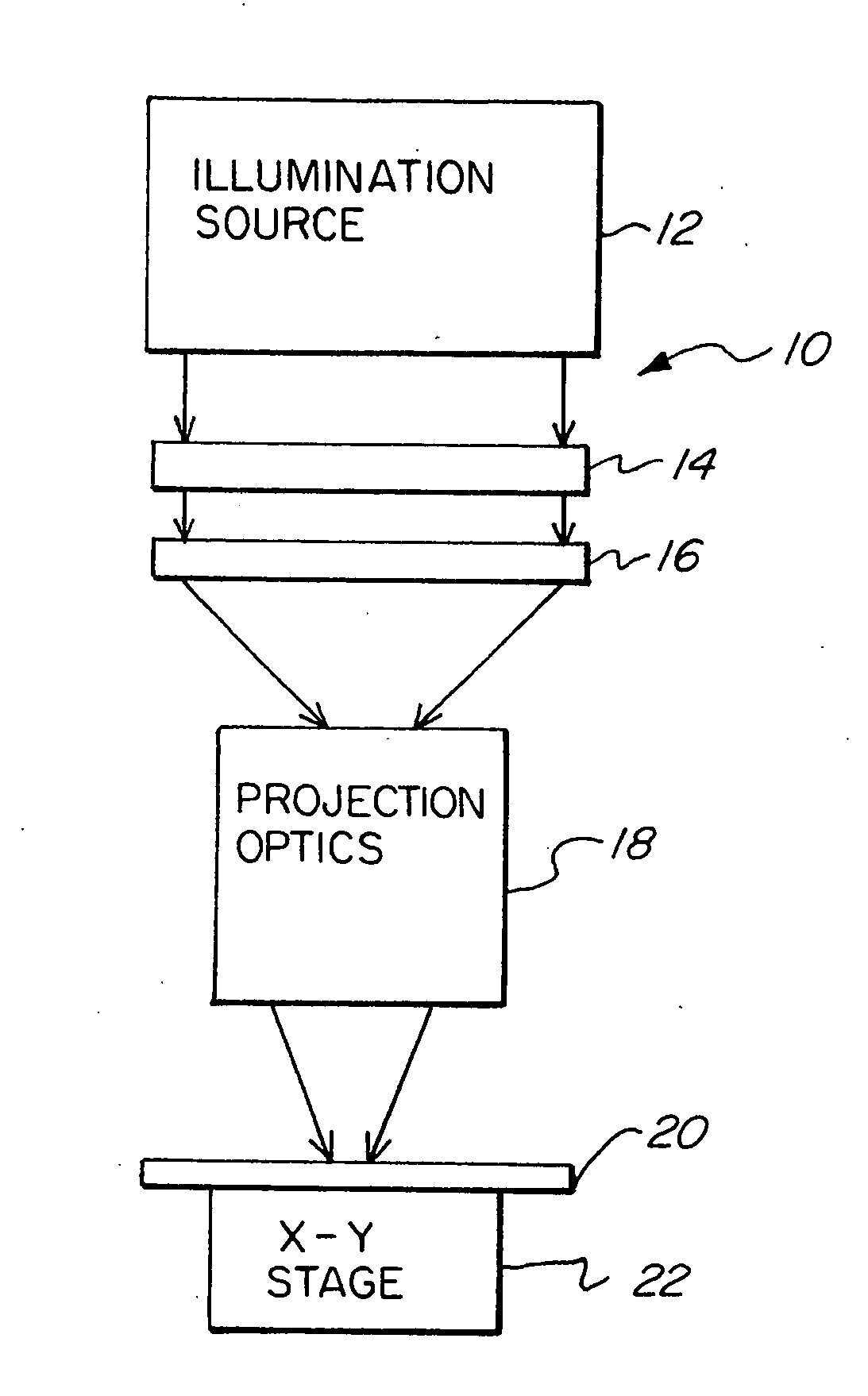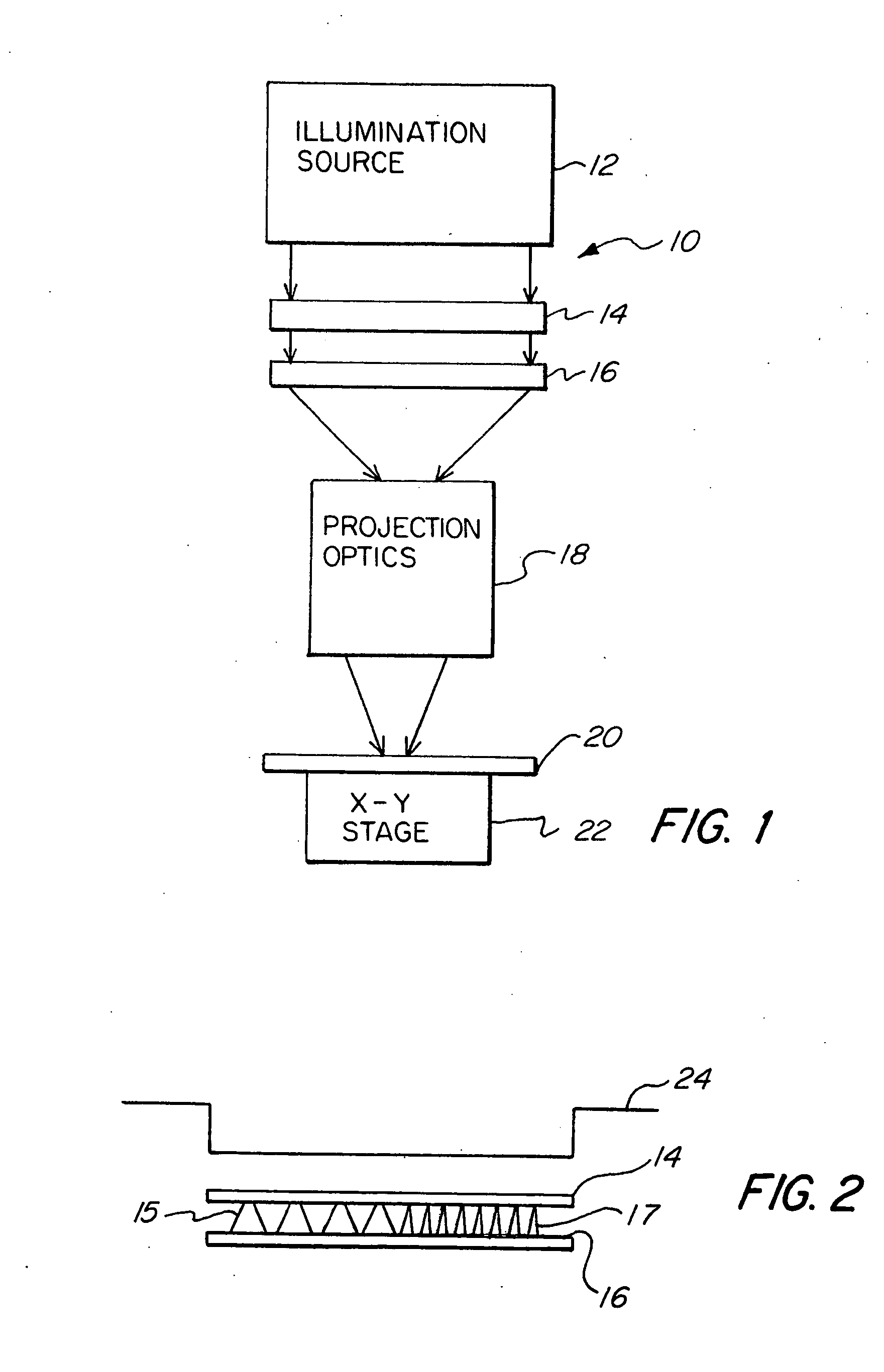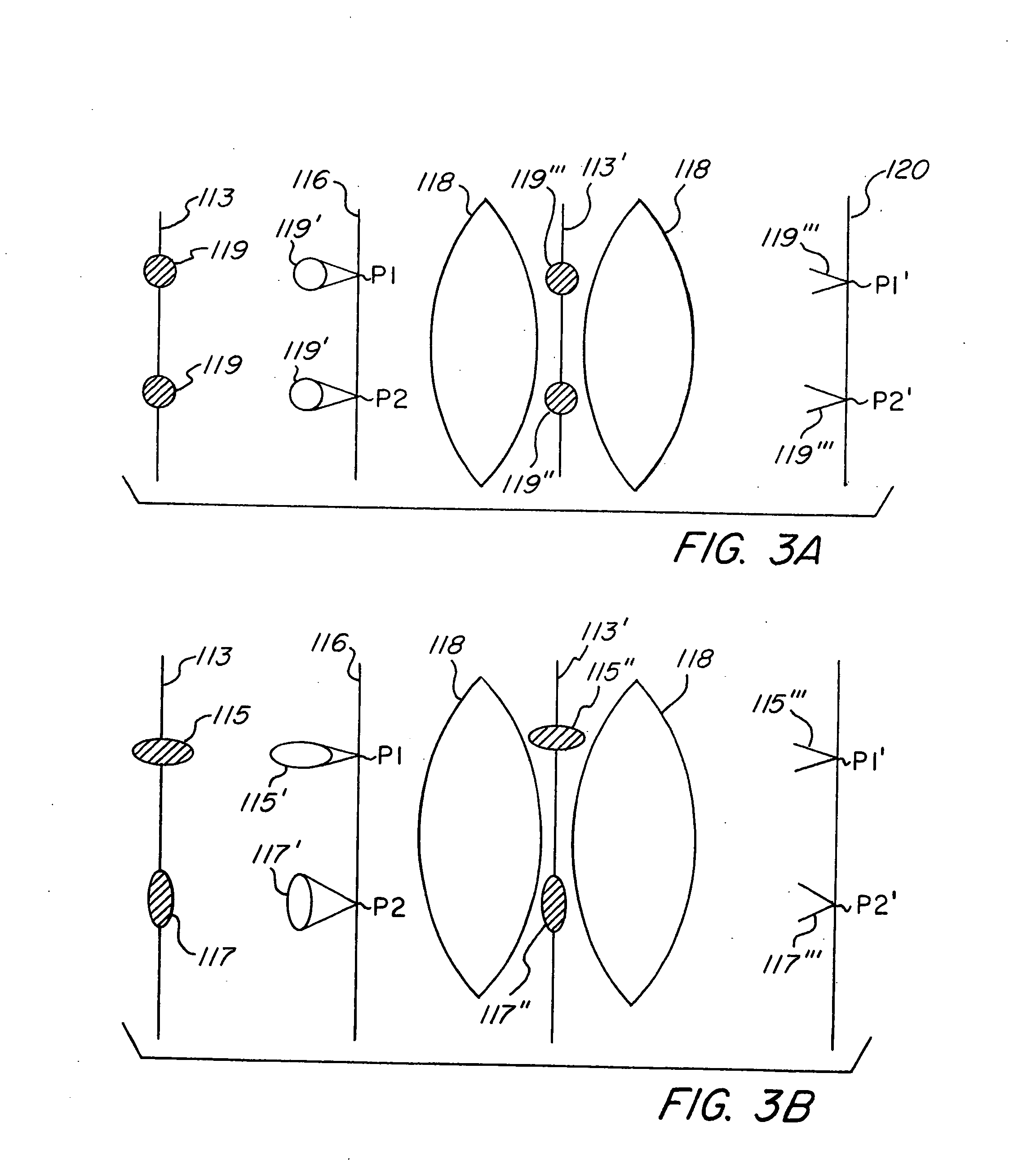Illumination system with spatially controllable partial coherence compensating for line width variances
a partial coherence and line width technology, applied in the field of semiconductor manufacturing, can solve the problems of not optimizing images, unable to provide images of reticles onto photosensitive substrates, etc., and achieve the effects of improving imaging, improving photolithographic tools or systems, and easy chang
- Summary
- Abstract
- Description
- Claims
- Application Information
AI Technical Summary
Benefits of technology
Problems solved by technology
Method used
Image
Examples
Embodiment Construction
FIG. 1 schematically illustrates a photolithographic system 10. Illumination source 12 projects electromagnetic radiation through an optical element 14 and onto a reticle 16. An illumination plane is formed at the reticle 16. An image of the reticle 16 is projected onto a wafer 20 by projection optics 18. Wafer 20 has a photosensitive resist coating thereon which is exposed by the image of the reticle 16. Wafer 20 is mounted on a wafer stage 22 which is movable in the X and Y direction. In some photolithography operations, the wafer stage 22 may also be scanned along one axis. The illumination source 12 may be any illumination source or system, such as that disclosed in U.S. Pat. No. 5,631,721, entitled “Hybrid Illumination System For Use In Photolithography” by Stanton et al, which is herein incorporated by reference in its entirety.
FIG. 2 illustrates an illumination profile 24 created by the illumination source 12, illustrated in FIG. 1. Generally, it is desirable that the intensi...
PUM
 Login to View More
Login to View More Abstract
Description
Claims
Application Information
 Login to View More
Login to View More - R&D
- Intellectual Property
- Life Sciences
- Materials
- Tech Scout
- Unparalleled Data Quality
- Higher Quality Content
- 60% Fewer Hallucinations
Browse by: Latest US Patents, China's latest patents, Technical Efficacy Thesaurus, Application Domain, Technology Topic, Popular Technical Reports.
© 2025 PatSnap. All rights reserved.Legal|Privacy policy|Modern Slavery Act Transparency Statement|Sitemap|About US| Contact US: help@patsnap.com



